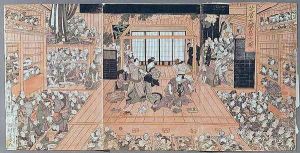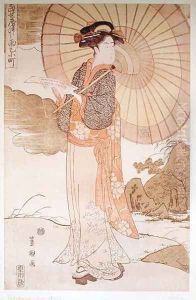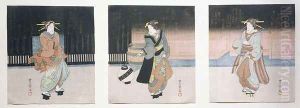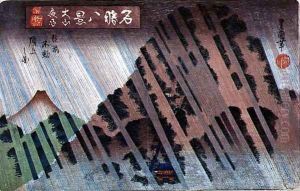(Utagawa Toyoshige) Toyokuni II Paintings
Utagawa Toyoshige, better known as Toyokuni II, was a notable Japanese ukiyo-e artist who lived during the late Edo period. Born in 1777, he became an influential figure in the world of Japanese woodblock printing, a tradition that has left a lasting legacy on the visual arts both within Japan and internationally. Toyokuni II was initially a student and eventually a successor of the renowned Utagawa Toyokuni I, from whom he inherited the name Toyokuni, marking a common practice within the ukiyo-e artist community where names were passed down to denote lineage and honor.
Toyokuni II's artistic career was marked by his efforts to maintain the prestige of the Utagawa school, amidst the changing tastes and evolving styles of the Edo period’s art scene. Despite the challenge of living up to the reputation of his predecessor, Toyokuni II managed to carve out his own niche in the highly competitive world of ukiyo-e. His works predominantly featured kabuki actors, beautiful women (bijin-ga), and occasionally, historical scenes. However, his style was sometimes criticized for not quite reaching the heights of Toyokuni I, leading to a complex legacy overshadowed by both his predecessor and his contemporaries.
The period of Toyokuni II's activity was a time of great innovation and transformation in ukiyo-e, as artists experimented with new techniques, colors, and subject matter. Despite the competition, Toyokuni II contributed significantly to the genre, particularly in his portrayals of the kabuki theatre, capturing the vibrancy and dynamism of the performances and the nuanced expressions of the actors. His work, while perhaps not as celebrated as that of some of his peers, remains an important part of the Utagawa school's output, reflecting the artistic trends and cultural preoccupations of his time.
Toyokuni II's legacy is complicated by the fact that after his death in 1835, another artist in the Utagawa school, Utagawa Kunisada, claimed the name Toyokuni, calling himself Toyokuni III. This has led to some confusion in attributing works to the correct artist. Despite these challenges, Toyokuni II's contributions to the development of ukiyo-e and the preservation of the Utagawa school's traditions cannot be understated. His works continue to be studied and appreciated for their beauty and historical value, offering insights into the cultural and artistic milieu of early 19th-century Japan.



